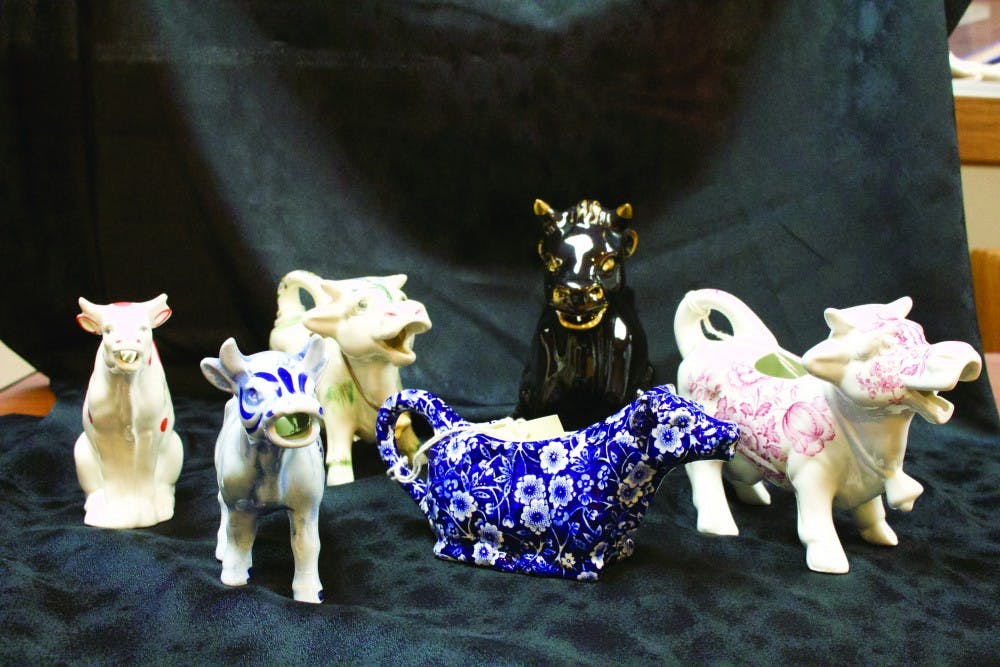By Becca Eis | Echo
Hundreds of bottles of coffee creamers are used by the Taylor student population each year, but it is unlikely that many have used a cow creamer when doctoring up their beverage of choice.
Fitting to the cornfields of Upland, Indiana, the Ringenberg Archives and Special Collections houses a collection of these intricate and one-of-a-kind pieces in a collection donated by 1929 alumni Raymond and Garnet Rice in 1978. The special collection within the archives includes over 200 creamers, with 150 being antiques and the others modern collectibles.
Originally an essential part of a coffee or tea set, a cow creamer can be used to hold cream or milk. Today, cow creamers are also used as simple, elegant decorations. The liquid is poured into the cow using a hole in the cow's back and poured out from a smaller hole in the mouth. The cow's tail is often curled and attached to the back to form a handle.
Older cow creamers are made out of sterling silver, while more modern version are molded from clay and glazed with various enamels and chemicals to bring out different colors and textures. Cow creamers are valued by age, artist, materials and current condition. As evidenced by the Rice family's collection, creamers do not only come in the shape of cows, but also elks, sheep, moose and bulls.
The creamers in the Rice cow creamer collection span three centuries and three continents - North America, Europe and Asia. The oldest piece in the collection, allegedly from 1760, is believed to have been crafted by Thomas Whieldon, a British artisan, and was valued at $250 in a 1978 appraisal. Also significant, the first creamer collected by the Rice family was thought to have been made by John Schuppe. Schuppe was a Dutch silversmith who popularized cow creamers in Western Europe after immigrating to England in 1750. The piece is sterling silver and branded "JTS."
Four creamers in the collection include flies on the cows' backs. When cow creamers were popular, this addition created aesthetic value by providing the piece with a realistic touch of everyday life. Back then, flies were associated with the milking operation and viewed negatively as carriers of diseases as they are today.
According to an article in Collector's News in July 2009 , Raymond and Garnet Rice began collecting cow creamers due to their affiliation with the dairy industry. After acquiring their first Dairy Queen franchise in 1945, the Rice family ended up owning every Dairy Queen in Missouri, excluding those in St. Louis.
The Ringberg Archives and Special Collections have received a number of requests to view the collection throughout the years. Perhaps the most notable of these requests came from a graduate student in the United Kingdom who needed information on the Rice cow creamer collection for her thesis. She had found the collection online and contacted Ashley Chu, university archivist and librarian, for information such as pictures and measurements.
"We actually set up a Skype research session, and I got out all the ones that she was interested in and held them up," Chu said. "She had all these questions and it was the most interested I had ever seen anyone with a research interest in cow creamers, and so it was really cool to see them used in that way."
The Archives is transitioning the collection out of its large display case in the main room of the area that houses the archives in the Zondervan Library, but they hope to display a select few on a podium or in a shadow box in the future for passerby's viewing enjoyment.



